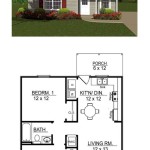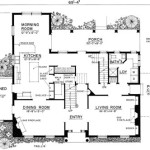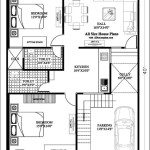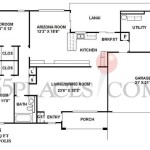Ranch House Plans: No Basement
Ranch house plans without basements offer a compelling blend of practicality, affordability, and timeless appeal. These single-story designs cater to a wide range of lifestyles, from young families and first-time homebuyers to those seeking accessible living spaces for retirement. Eliminating the basement simplifies construction and reduces overall costs, making ranch homes an attractive option in various housing markets. This article explores the key aspects of ranch house plans without basements, covering design considerations, advantages, and potential drawbacks.
One of the primary advantages of a ranch house without a basement is its accessibility. The single-story design eliminates stairs, making it ideal for individuals with mobility challenges, older adults, and families with young children. This step-free layout fosters ease of movement within the home and simplifies daily tasks. Furthermore, the absence of stairs can contribute to a more open and spacious feel, promoting a sense of connectivity between different areas of the house.
Cost-effectiveness is another significant benefit. Excavation and construction of a basement represent a substantial portion of a home's overall building expenses. By omitting this element, homeowners can significantly reduce construction costs. This allows for greater flexibility in allocating budget towards other aspects of the project, such as higher-quality finishes, landscaping, or energy-efficient features. Lower construction costs also translate to lower property taxes in many areas.
Ranch house plans offer a diverse range of design possibilities. While traditionally associated with a sprawling footprint, modern ranch designs can be adapted to various lot sizes and configurations. Open floor plans are a popular choice, creating a spacious and airy living environment. Split-bedroom designs provide added privacy by separating the master suite from other bedrooms, ideal for families or those who frequently host guests. Flexible layouts allow homeowners to customize the space to suit their specific needs and preferences.
Maintenance is generally simpler in a ranch house without a basement. The absence of stairs reduces the risk of falls, and the single-story design makes exterior maintenance tasks, such as cleaning gutters and painting, more straightforward. Furthermore, issues related to basement dampness, mold, and pests are eliminated, contributing to a healthier indoor environment and lower maintenance requirements.
While a basement can provide valuable storage space, ranch homes without basements offer alternative storage solutions. Attached garages, attics, and strategically placed closets can be designed to maximize storage capacity. Built-in shelving, drawers, and organizers can further enhance functionality and optimize available space. Additionally, outdoor sheds or detached garages can provide supplemental storage for larger items or seasonal equipment.
Energy efficiency can be optimized in ranch house plans without basements. The single-story design reduces the stack effect, which can lead to energy loss in multi-story homes. Proper insulation, energy-efficient windows and doors, and airtight construction contribute to lower heating and cooling costs. The simplified HVAC system design, often requiring fewer zones, can also contribute to enhanced energy efficiency.
Despite the numerous benefits, ranch house plans without basements present certain considerations. The lack of a basement eliminates a readily available storm shelter option. Homeowners in areas prone to severe weather may need to explore alternative storm sheltering solutions. Furthermore, the absence of a basement reduces the overall square footage of living space compared to a similar-sized home with a basement. Careful planning and efficient use of space are essential to maximize functionality and comfort.
Expanding a ranch house without a basement can be more challenging and costly compared to finishing a basement in a two-story home. Adding square footage typically involves extending the footprint of the house, requiring more extensive construction and potentially impacting the existing landscaping. Careful consideration of future needs and long-term plans is crucial when designing a ranch home without a basement.
Resale value can vary depending on regional preferences and market trends. In some areas, basements are highly desirable and can significantly impact resale value. However, in other areas, the convenience and affordability of ranch homes without basements are highly valued by homebuyers. Understanding local market preferences is essential when considering the potential resale value of a ranch house without a basement.
Ranch house plans without basements offer a unique combination of accessibility, affordability, and design flexibility. Careful consideration of the advantages and disadvantages, along with thorough planning and design, can result in a comfortable, functional, and cost-effective home that meets the needs and preferences of a wide range of individuals and families.

25 House Plans No Basement Ideas In 2024 Floor

3 Bed Craftsman Ranch Plan With Unfinished Basement Architectural Designs 135021gra House Plans

Traditional House Plan With Craftsman Details Ranch Plans New Small

Pin On Maybe Someday

Small Ranch House Plan 2808

Ranch Home 3 Bedrms 5 Baths 2974 Sq Ft Plan 142 1253

Ranch Style House Plan 3 Beds 2 Baths 1493 Sq Ft 427 4 Plans Basement

3 7 Bedroom Ranch House Plan 2 4 Baths With Finished Basement Option 187 1149

House Plan 45467 Ranch Style With 1680 Sq Ft 4 Bed 2 Bath

1962 National Plan Service Ranch House Plans Blueprints Basement








